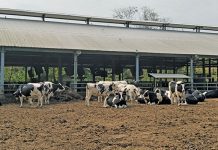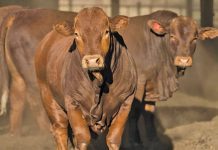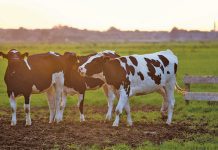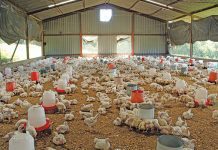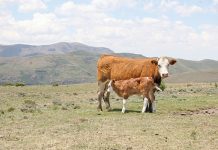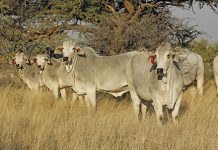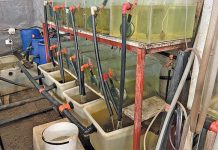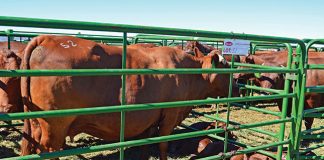Cattle are domesticated ungulates. An ungulate is a hoofed animal that uses the tips of its toes to carry its weight while moving. A domesticated animal is one that has been tamed and is used to work with humans. People have kept cattle since before there was writing. Currently, there are about 1,3 billion head of cattle in the world. India has the most cattle, with more than 280 million – 28% of the world cattle population.
Next is Brazil with 187 million (19%), China with 140 million (14%), and the US with 97 million (10%).South Africa has about 14 million head of cattle – 1,4% of the total world population. Africa is home to about 20 million cattle. Cattle are ruminants, which means their digestive systems (or stomachs) can process foods other animals can’t eat. They do this by eating, regurgitating (throwing up) and re-chewing the food as “cud”. The cud is then re-swallowed and worked on some more by special organisms in the rumen – the animal’s biggest stomach compartment. This enables cattle to thrive on grasses and other vegetation.
Cows and calving
A cow is an adult female that has had a calf. A “heifer” is a young female that hasn’t calved and is under three years old.Calves are born after about nine months of pregnancy. This is known as the gestation period. After calving, a cow shouldn’t be brought to a bull again before 50 days have gone by, to allow her to rest after giving birth. In herds where calving takes place in a restricted breeding season, this means a cow has a short period of time to fall pregnant.
Think about it. Adding 50 days to the 283 days of gestation and subtracting the total from the 365 days that make up a year, leaves the cow with 32 days to conceive if she must calve at about the same time the following year. On average, a cow comes on heat for six to 18 hours every 21 days, which means she only has about two chances to conceive again during the 32-day period.Good record-keeping is essential for a strict breeding management programme. Trying to speed up the process by giving the cow less time to recover is a definite no-no!
Source: KwaZulu-Natal Department of Agriculture and Environmental Affairs. For more information call 033 355 9100.

